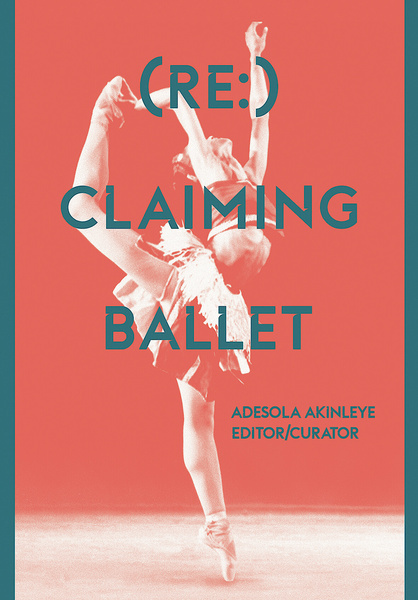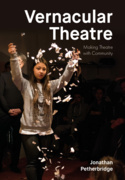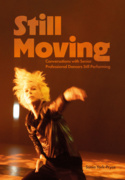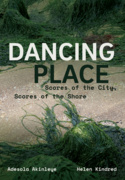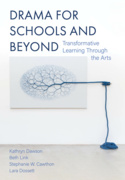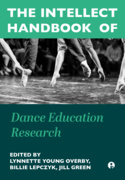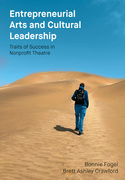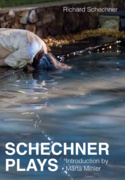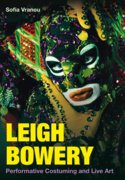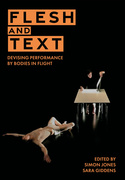(Re:) Claiming Ballet (Book)
This anthology explores alternative and parallel influences that shape the culture of ballet. The ‘we’ of ballet is complex, encompassing individuals and communities, often marginalized, who contribute to discourses about ballet beyond the mainstream White, patriarchal, Eurocentric, heterosexual constructs of gender, race and class. 8 b/w illus.
New Books Network (New Books in Performing Arts) interview with Adesola Akinleye
Edition
The collection of essays demonstrates that ballet is not a single White Western dance form but has been shaped by a range of other cultures. In so doing, the authors open a conversation and contribute to the discourse beyond the vantage point of mainstream to look at such issues as homosexuality and race. And to demonstrate that ballet’s denial of the first and exclusion of the second needs rethinking.
This is an important contribution to dance scholarship. The contributors include professional ballet dancers and teachers, choreographers, and dance scholars in the UK, Europe and the USA to give a three dimensional overview of the field of ballet beyond the traditional mainstream.
It sets out to acknowledge the alternative and parallel influences that have shaped the culture of ballet and demonstrates they are alive, kicking and have a rich history. Ballet is complex and encompasses individuals and communities, often invisiblized, but who have contributed to the diaspora of ballet in the twenty-first century. It will initiate conversations and contribute to discourses about the panorama of ballet beyond the narrow vantage point of the mainstream – White, patriarchal, Eurocentric, heterosexual constructs of gender, race and class.
This book is certain to be a much-valued resource within the field of ballet studies, as well as an important contribution to dance scholarship more broadly. It has an original focus and brings together issues more commonly addressed only in journals, where issues of race are frequently discussed.
The primary market will be academic. It will appeal to academics, researchers, scholars and students working and studying in dance, theatre and performance arts and cultural studies. It will also be of interest to dance professionals and practitioners.
Academics and students interested in the intersection of gender, race and dance may also find it interesting.
Adesola Akinleye, PhD, is a choreographer artist-scholar. Trained at Ballet Rambert, her career began at Dance Theatre of Harlem, later working with UK Companies such as Carol Straker Dance Company and Green Candle. She is a Senior Lecturer at Middlesex University Research Fellow with Theatrum Mundi, visiting lecturer at Central Saint Martins, and Research Affiliate and visiting artist at MIT. Akinleye is co-artistic director of DancingStrong Movement Lab. She creates works from live performance (often site-specific involving a cross-section of the community) to films, & text. Her work is characterized by an interest in voicing peoples lived-experiences through moving portraiture. She teaches ballet, contemporary dance and other practical dance classes as well as dance education, theory and history. She has won awards internationally for her choreography, as well as published in the areas of dance and cultural studies.
Introduction: Regarding claiming ballet / reclaiming ballet
Chapter 1: Ballet, from property to Art – Adesola Akinleye
Chapter 5: The traces of my ballet body - Mary Savva
Chapter 6: Ballet Beyond Boundaries – Personal History. Brenda Dixson Gottschild
Chapter 7:“Auftanzen statt Aufgeben” and The Anti Fascist Ballet School -Elizabeth Ward
Chapter 8: Dancing Across Historically Racist Borders – Kehinde Ishangi
Chapter 9: Dance Theatre of Harlem’s radicalization of ballet in 1970s & 1980s – Theresa Ruth Howard
Chapter 10: Personal testimony as social resilience - Theara J. Ward
Chapter 12: The Ever After of Ballet – Selby Wynn Schwartz
Chapter 14: The Counterpoint Project – When Life Doesn’t Imitate Art - Endalyn Taylor
Chapter 15: Ballet’s Binary Genders in a Rainbow-Spectrum World:
'(Re:) Claiming Ballet is a comprehensive guide to the extensive influence of the marginalized on ballet. For readers who interact with other performing arts sectors, such as music or theater, it would be beneficial to carefully consider the similarities between how issues of class, gender, and race permeate both the ballet world and other facets of the performing arts. (RE:) Claiming Ballet successfully demonstrates the strides ballet has made in becoming more inclusive and less restrictive. It is imperative for humans – particularly those in positions of power – to examine themselves and consider what positive changes can be made; in turn, the practices of today will inform and influence the generations to come.'
'This anthology is a valuable tool for engaging new audiences in ballet; it is a call-to-action for younger generations to connect ballet with their lived worlds. It will be of interest to academics, researchers, or students working in the fields of dance, theater, performing arts, and cultural studies—especially within the intersection of gender, race, and dance. I recommend this book to anyone who wants to acquire a broader knowledge of ballet as a global art form with the potential to become a key representation of our multicultural society.'
'[This book] examine[s] the white, cis, heteropatriarchal history of ballet, and how many dancers and choreographers are grappling with this history. It has started some very important conversations about the role of ballet today and how this art can thrive within the beauty of difference.'


